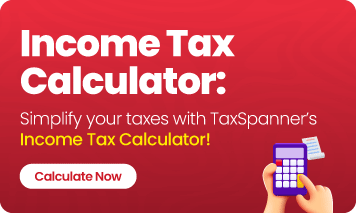Understanding Income Tax Scrutiny Assessment under Section 143(2) of the Income Tax Act
Filing your Income Tax Return (ITR) accurately is crucial, but sometimes, discrepancies may arise, leading to scrutiny by the Income Tax Department. If you have received an income tax notice under Section 143(2), it means that your ITR has been selected for a detailed assessment. Understanding how this process works and how to respond effectively can save you from unnecessary stress and penalties.
What is Scrutiny Assessment Under Section 143(2)?
Scrutiny assessment is an in-depth examination of the details furnished in your ITR to make sure accuracy and compliance with tax regulations. The Assessing Officer (AO) issues a notice u/s 143(2) to verify that:
- Income has not been understated
- Losses are not overreported
- Tax liability is accurately computed
- Any high-value transactions have been correctly declared
- No discrepancies exist in deduction, exemptions, and claims
This process guarantees that taxpayers have correctly filed their returns and paid the appropriate taxes.
Why is an ITR Selected for Scrutiny?
Not every ITR is selected for scrutiny. The Income Tax Department primarily picks returns based on specific red flags or inconsistencies, such as:
- High-value transactions not matching reported income
- Large deductions or exemptions that appear excessive
- Significant variations in income compared to previous years
- Mismatch between Form 26AS, AIS, and ITR
- Frequent revisions or amendments to the filed return
When is Notice u/s 143(2) Issued?
A notice under Section 143(2) of the Income Tax Act is issued only if the taxpayer has already filed an ITR. The notice is typically served within three months from the end of the financial year in which the return was filed.
For example, if an ITR was filed on 31st July 2024, the financial year 2024-25 will end on 31st March 2025, and the notice can be issued anytime before 30th June 2025.
Types of Scrutiny Assessments
Not all scrutiny assessments are the same. The Income Tax Department categorizes them as follows:
- Limited Scrutiny
Selected based on Computer-Assisted Scrutiny Selection (CASS), where only specific aspects of the return are examined, such as:
- Sale of property
- Foreign tax credits
- Unusual deductions claimed
2. Complete Scrutiny
The entire return, including previous filings, deductions, and income sources, is thoroughly examined. This type is more detailed and can take longer.
3. Manual Scrutiny
Cases are selected based on specific criteria set by the Central Board of Direct Taxes (CBDT), which may change annually. These cases often involve high-risk taxpayers.
Steps to Handle a Notice u/s 143(2)
Step 1: Receiving the Notice
- The income tax notice 143(2) is sent via email and can be accessed on the Income Tax e-filing portal.
- The notice will mention the reason for scrutiny and the documents required for submission.
Step 2: Responding to the Notice
- Log in to the Income Tax e-filing portal.
- Review the reason for scrutiny and gather all relevant documents, including:
- Income proofs (salary slips, bank statements)
- Investment receipts
- Deduction claims (80C, 80D, HRA, etc.)
- Business expense records (for self-employed individuals)
- Submit the required details online or appear before the Assessing Officer (AO) as per instructions in the notice.
Step 3: Assessment and Final Order
- After reviewing the submitted evidence, the AO will pass an order under Section 143(3), determining the tax payable or refund due.
Time Limit for Scrutiny Assessments
The time frame for completing scrutiny assessment varies based on the Assessment Year (AY):
| Assessment Year (AY) | Time Limit from End of AY | |
|---|---|---|
| 2017 – 2018 or before | 21 months | |
| 2018 – 2019 | 18 months | |
| 2019 – 2020 onwards | 12 months |
Common Reasons for Scrutiny of Tax Refunds
Many taxpayers receive scrutiny notices due to high refund claims. The AO may request additional documentation, such as:
- Salary slips and Form 16
- Proof of deductions (Section 80C, 80D, etc.)
- Investment statements
- Bank statements reflecting refund credits
If discrepancies are found, the refund may be delayed or denied.
What Happens if You Ignore a Notice u/s 143(2)?
Failure to respond to the notice can lead to severe consequences, including:
- Penalty of Rs. 10,000 u/s 271(1)(b)
- Best judgment assessment under Section 144, where the AO determines your income without your input
- Prosecution in extreme cases, leading to fines or imprisonment
How to Avoid Scrutiny Notices in the Future?
To minimize the chances of receiving a scrutiny notice:
- Make sure accurate reporting of income from all sources
- Reconcile Form 26AS, AIS, and ITR before filing
- Claim deductions only with proper documentation
- Avoid making multiple revisions to your return
- Report high-value transactions correctly
Need Expert Assistance? Contact TaxSpanner
Handling an income tax scrutiny assessment requires expertise. TaxSpanner provides comprehensive support to help you:
- Understand your income tax notice 143(2)
- Prepare necessary documents for scrutiny
- Respond effectively to tax authorities
- Minimize tax liabilities and penalties
Don’t let a scrutiny notice stress you out! Get expert guidance from TaxSpanner to navigate Section 143(2) of the Income Tax Act with ease. Get in touch today!
In conclusion, facing an income tax scrutiny assessment can be daunting, but with the right knowledge and preparation, you can handle the process smoothly. By understanding why notices are issued, responding promptly, and maintaining proper documentation, taxpayers can avoid penalties and make sure compliance. Seeking expert guidance from professionals like TaxSpanner can make the entire process hassle-free and secure your financial interests. Stay informed, file accurately, and keep your tax records in order to avoid future scrutiny.
Explore TaxSpanner's wide range of calculators for your tax planning and calculations!
View Tools & Calculators





